The VF-18 was a relatively uncluttered car, the layout of which was predefined by the team’s decision to purchase a huge swathe of parts from Ferrari.
That didn’t make it a copy of last year’s Ferrari as some have suggested though, rather a tribute – as it makes sense to take design cues from the larger teams when operating with less resources and a relatively meagre budget.
Join us as we take a look at some of the similar design elements that may have provoked such indignation and marvel at the complexity of the designs only used by Haas in 2018…
Haas F1 Team VF-18 Ferrari engine

Photo by: Giorgio Piola
Covers off – a fabulous view of how the Ferrari unit and all the ancillary coolers, etc are installed within the VF-18.
Haas F1 Team VF-18 front wheel hub

Photo by: Mark Sutton
The VF-18’s front brake assembly without the main brake drum attached reveals this crossover pipework which internally feeds air across the face of the assembly from the inlet and ejects it through the wheel face for an aerodynamic gain. Note the teardrop-shaped holes allow heat generated under braking to escape through similarly placed holes in the drum.
Haas F1 Team VF-18 rear wheel hub detail

Photo by: Mark Sutton
A fantastic view of the rear suspension and brake assembly whilst the car is being prepared allows us to see some of the internal ducting to the calipers, etc.
Haas F1 Team VF-18 bargeboard detail
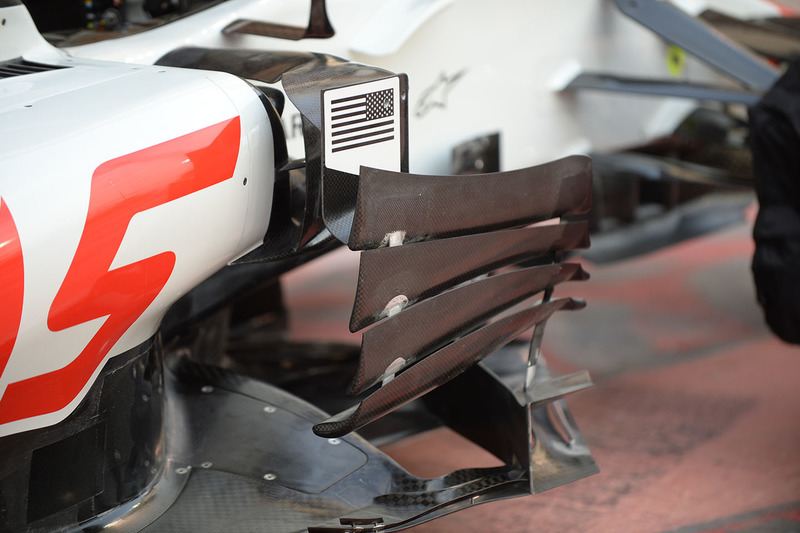
Photo by: Mark Sutton
A great view of the fluted multi-element sidepod deflectors used by Haas in 2018.
Haas F1 Team VF-18 halo detail
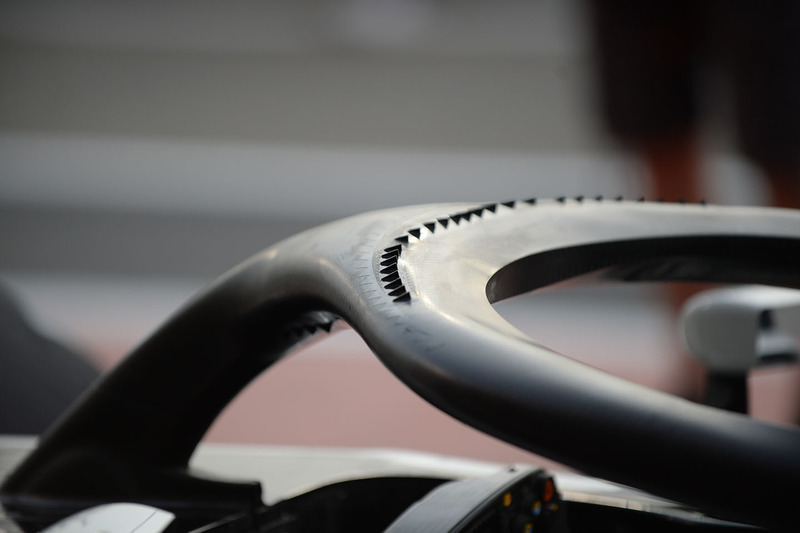
Photo by: Mark Sutton
A close-up of the small vortex-generating teeth and trip strip placed on the upper surface of the VF-18’s halo, latterly replaced by a triple-element boomerang winglet.
Haas F1 Team VF-18, floor and bargeboard

Photo by: Giorgio Piola
Haas made a raft of changes to the area ahead of the sidepods at the Canadian GP, as the bargeboard’s leading vertical element was arched over to meet the chassis (red arrow), stanchion-style cascades were added to the bargeboard’s footplate (white arrow). The sidepod deflectors were connected to the bridge slat (blue arrow), while Haas joined Force India in their mirror-mounting approach, using stalks that protrude from the bridging slats leading edge (black arrow).
Haas F1 Team VF-18, bargeboard

Photo by: Giorgio Piola
The team also adopted the straked floor design seen elsewhere on the grid, including Mercedes and Red Bull (inset).
Haas F1 Team VF-18 front wing detail
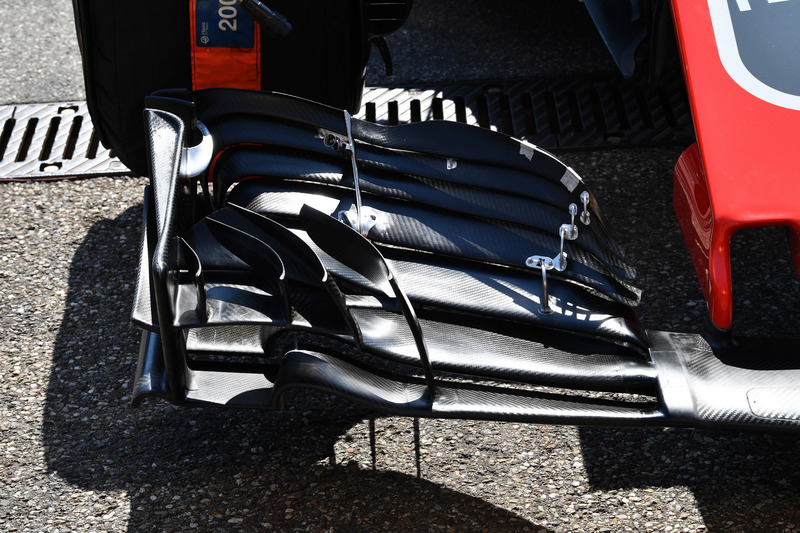
Photo by: Mark Sutton
An overview of the VF-18’s front wing from the German GP shows how much effort goes into turning the airflow across and around the front tyre, with the cascade elements set up for aggressive outwash.
Haas F1 Team VF-18 steering wheel
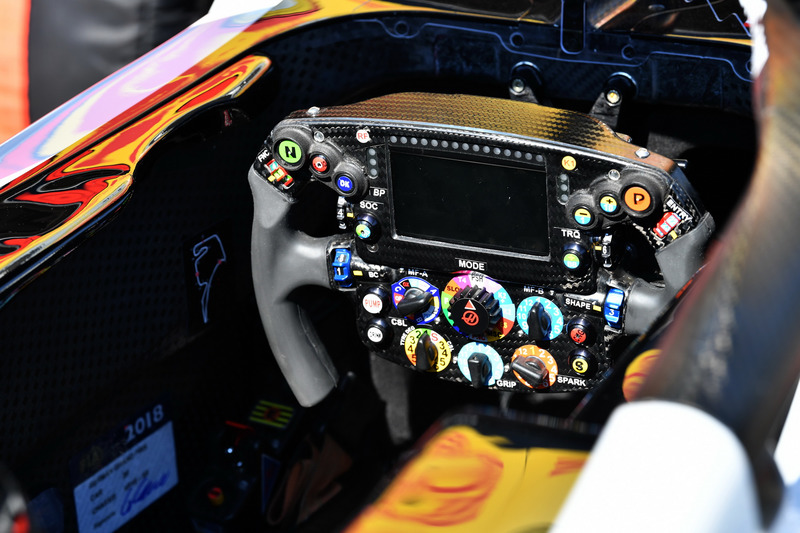
Photo by: Mark Sutton
A nice shot inside the cockpit gives us a view of the VF-18’s steering wheel with the various buttons and rotary switches that are available to the driver to make setting changes.
Haas VF-18 rear wing, Belgian GP
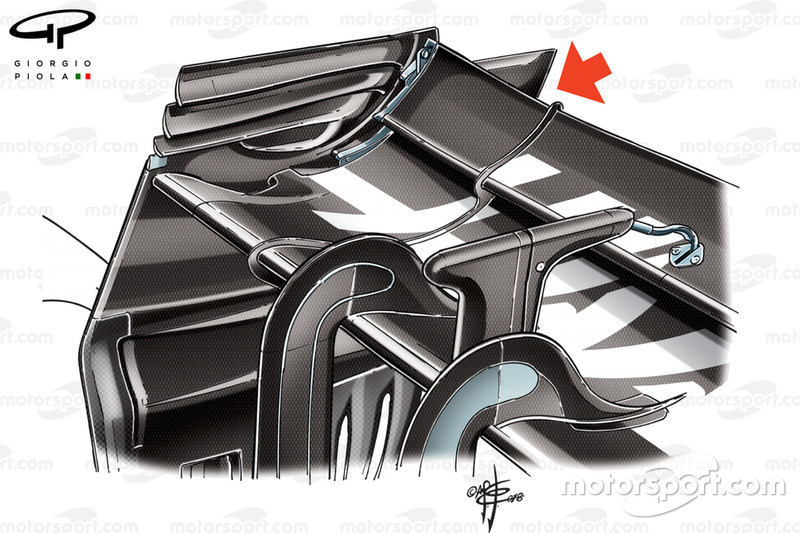
Photo by: Giorgio Piola
Drag reduction is critical at the first two circuits that follow on from the summer break and so Haas arrived with a bow-tie style design in Belgium. A thinner profile in the central part of the wing cuts down on the overall drag created while still allowing for the requisite amount of downforce to be created in the outboard sections.
Haas F1 Team VF-18, floor

Photo by: Giorgio Piola
Changes to the bargeboards and splitter extension were also afoot in Belgium, with the shape and frequency of the serrations in the bargeboards footplate altered, whilst stanchion cascades were mounted atop them (white arrow). Meanwhile, two additional ducting holes were placed on the outer section of the splitter (red arrow).
Haas F1 Team VF-18, floor
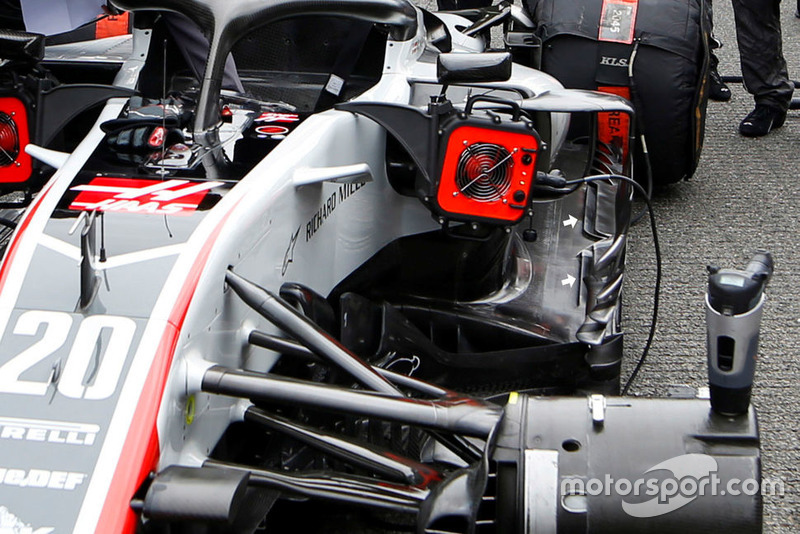
Photo by: Giorgio Piola
The edge of the floor was also treated to the longitudinal slots (white arrows) that have now become commonplace up and down the grid too.
Haas F1 Team VF-18 , floor & bargeboard
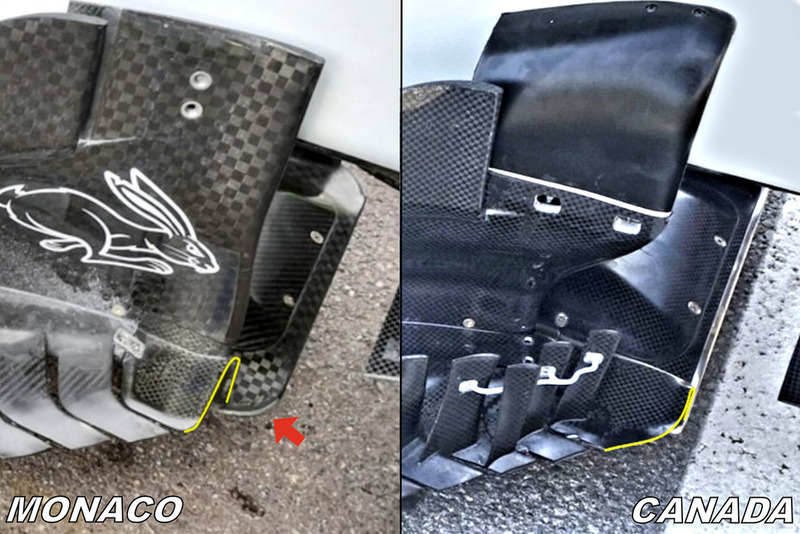
Photo by: Albert Fabrega
Haas courted controversy during the season, having used a floor that had been deemed to contravene the regulations, by virtue of how the bargeboards connected to the splitter (highlighted in yellow). It’s an issue that came to a head at the Italian GP, where Renault protested the design and the team was disqualified from the results.
Haas F1 Team VF-18 halo detail
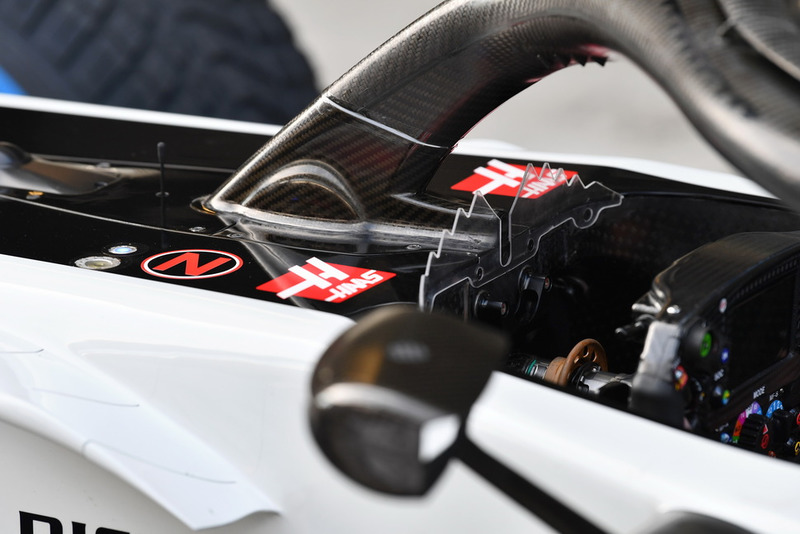
Photo by: Mark Sutton
A close up of the serrated windscreen used by Haas to reduce buffeting in the cockpit.
Haas F1 Team VF-18 halo detail

Photo by: Mark Sutton
A close up of the triple-element boomerang winglet that Haas switched to during the season.
Haas F1 Team VF-18 bargeboard

Photo by: Giorgio Piola
A nice view of the VF-18’s bargeboards and sidepod deflectors at the Russian GP.
Haas F1 Team VF-18 diffuser detail

Photo by: Giorgio Piola
Haas’ diffuser features a particularly aggressive outboard section which has been divided up into multiple sections.
Haas F1 Team VF-18 floor detail

Photo by: Giorgio Piola
A look at the floor specification that the team finished the year out with, complete with the en-vogue longitudinal floor slots ahead of two angled, fully enclosed holes.
Haas F1 Team VF-18 bargeboard detail
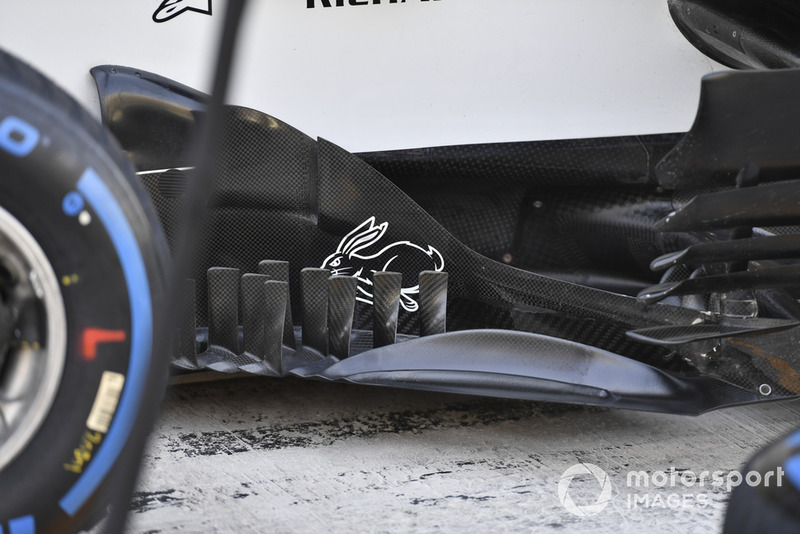
Photo by: Simon Galloway / Sutton Images
A look across at the specification of bargeboards that the team finished the season out with, note the vertical upstands that were added as part of the last update by the team.
Haas F1 Team VF-18 bargeboard detail

Photo by: Giorgio Piola
A top-down overview of the bargeboards, splitter extension and leading edge of the floor goes to show how much development and how complex they’ve become over the course of the season.
Source: Read Full Article
